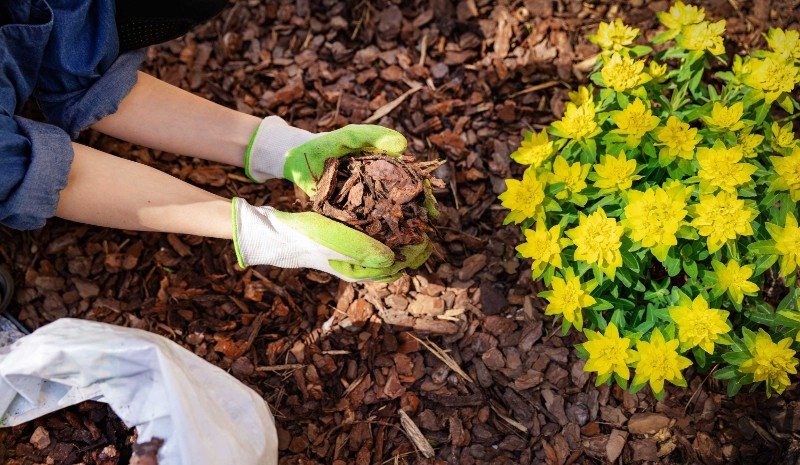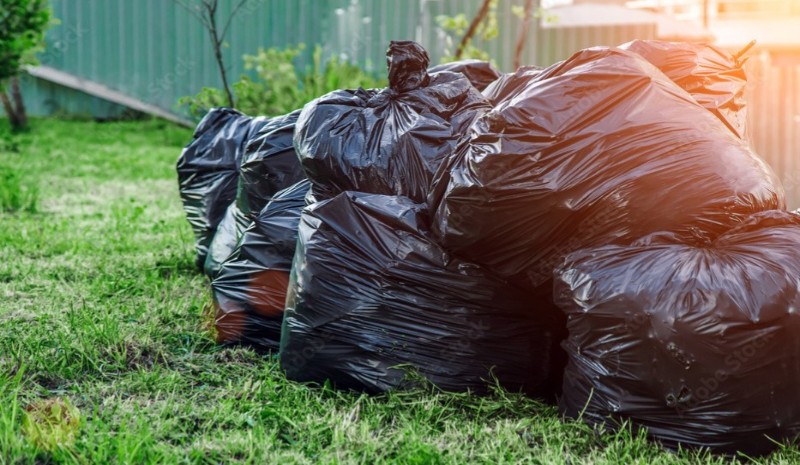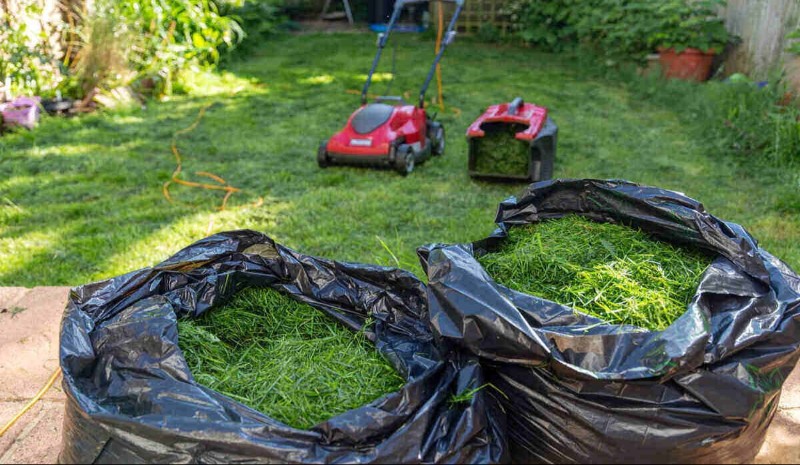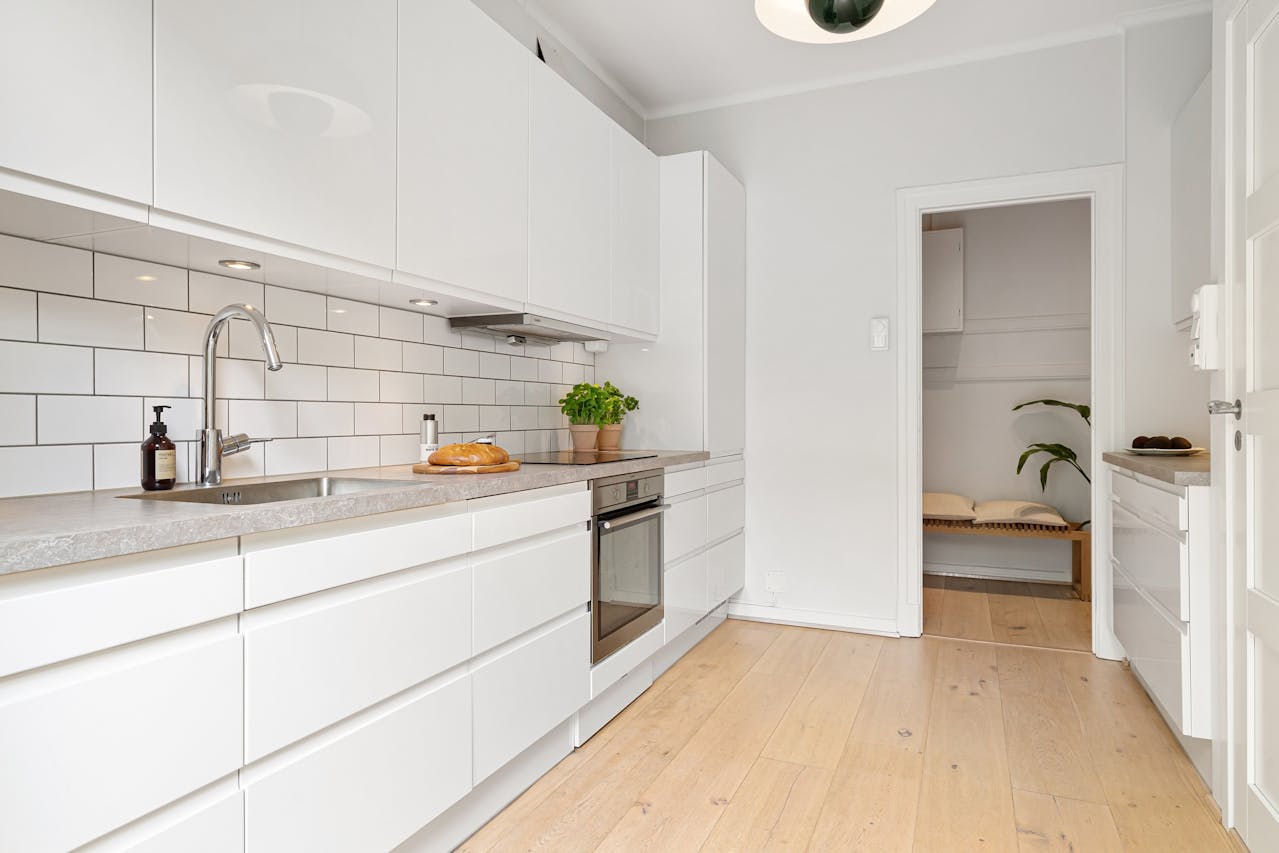When it comes to maintaining your garden, one of the key considerations is how to manage the clippings and debris. Two popular options are mulching and bagging, each with its own set of advantages and disadvantages. Mulching involves leaving grass clippings and other organic material on the ground to decompose and provide valuable nutrients to your plants.
Bagging, on the other hand, involves collecting the clippings and disposing of them elsewhere. While both methods have their merits, the choice between mulching and bagging depends on a variety of factors. In this article, we’ll explore the ins and outs of each method and look at the factors you should consider when deciding which one to choose for your garden.
Mulching
Mulching is a practice where a layer of organic or inorganic material is laid over the soil surface to conserve moisture, suppress weed growth, and promote soil health and fertility. The material used as mulch varies from one gardener to another and can include grass clippings, leaves, compost, straw, bark chips, rocks, and plastic sheets.
Organic mulches provide a wealth of nutrients to the soil as they decompose. For example, grass-clipping mulch is rich in nitrogen and can release as much as 25% of its weight in nitrogen back into the soil, acting as a natural fertilizer. Mulching with leaves is an excellent way to incorporate essential minerals like potassium, magnesium, and calcium into the soil. As organic mulch breaks down, it also helps form a rich, dark, and fertile layer of soil.
Inorganic mulches like rock or plastic sheeting are also effective for retaining moisture, suppressing weeds, and stabilizing soil temperature. Rocks, for example, can offer a striking, natural-looking mulch that can last a long time, unaffected by weather or other factors.
Plastic sheeting has the advantage of trapping water and heat, making it a popular choice for vegetable gardens in particularly dry or hot environments. Regardless of which material you choose, mulching is an essential practice that can boost your garden’s health and resilience. However, it’s important to remember that over-mulching can cause more harm than good, leading to water and air deprivation and pest infestations.
If you’re facing the challenge of dealing with soil mites and need effective solutions to tackle this issue, we invite you to explore our latest article, “How to Get Rid of Soil Mites” Discover valuable insights, expert advice, and practical techniques to regain control over your garden or indoor plants. In this comprehensive guide, we delve into the various types of soil mites, their potential impact on plant health, and most importantly, how to eliminate them from your soil.

Pros of Mulching
- Improves Soil Health: Mulching can improve soil health by increasing soil organic matter, improving soil structure, and enhancing nutrient cycling. This can lead to healthier plants with better growth and yield.
- Conserves Moisture: Mulch also helps to conserve soil moisture by reducing water loss through evaporation. This can be particularly useful in hot and dry climates or during periods of drought, as it reduces the need for watering.
- Suppresses Weed Growth: Mulch can suppress weed growth by blocking sunlight from reaching the soil surface. This can reduce the need for chemical herbicides and save time spent manually pulling weeds.
- Prevents Soil Erosion: Mulching can help prevent soil erosion by preventing rainwater from washing away soil particles. This is particularly useful on sloped landscapes where soil erosion is more likely to occur.
- Reduces Temperature Fluctuations: Mulching can help to regulate soil temperature by insulating the soil from extreme heat and cold. This can reduce stress on plants and help them to grow more efficiently.
- Cost-Effective: Mulching is a cost-effective way to maintain your garden as it can be done using readily available organic materials such as grass clippings or leaves. This can save money compared to other forms of garden maintenance.
Cons of Mulching
Cons of Mulching:
- Increased risk of disease: Leaving organic material on the ground can create ideal conditions for fungi and other pathogens to grow, increasing the risk of plant disease.
- Attracts pests: Mulch can also be an attractive habitat for insects and other pests that may damage your plants.
- May require more frequent mowing: If you use grass clippings as mulch, you may need to mow your lawn more frequently to prevent the buildup of excess material.
- Difficult to see debris: Mulching can make it hard to see any debris, like rocks or sticks, that may need to be removed from your lawn.
- Can increase soil acidity: If you use certain types of mulch, like pine straw or leaves, they can cause soil acidity to increase, which may not be ideal for some plants.
While mulching can provide many benefits to your lawn and garden, it’s important to be aware of these potential drawbacks. By taking the necessary precautions and keeping a close eye on your plants, you can minimize the risks of disease and pest problems while enjoying the many benefits that mulching has to offer.
How to Mulch

Mulching is a simple task that you can do yourself without requiring any special equipment. The following steps outline how to mulch your lawn effectively:
- Cut your grass: Ensure that your grass is not too long before mulching to avoid grass clipping build-up that may interfere with healthy grass growth patterns.
- Mow when it is dry: Make sure to mulch when it is dry as attempting to mulch in wet or damp conditions may result in clumping.
- Set your mower blade to the correct height: Set your mower blade to cut your grass at a height of at least 3 inches (7.5 cm). This height will ensure the grass can quickly regrow after being cut, and there won’t be clumps of grass left behind.
- Mulching. After cutting your grass, mow over it again while the deck chute or bag is open to let the grass clippings re-circulate back into your lawn. The mulch will help to promote healthy soil by keeping moisture levels even, suppressing weed growth, and freeing up valuable nutrients.
However, the grass should not be mulched too often as it may build up to create an impenetrable mat that will prevent air, water, and nutrients from reaching the grassroots. By mulching, you can minimize your lawn maintenance time and save yourself from the hassle of having to clean up piles of clippings.
Bagging
Bagging is an alternative to mulching that involves collecting grass clippings and other debris and disposing of it elsewhere. Rather than leaving the organic matter to decompose on the lawn surface, bagging involves using a lawnmower or other equipment to collect the clippings and transfer them to a compost pile, designated yard waste bin, or other disposal location. While this method can help to keep lawns looking neat and tidy, it does have some drawbacks. Bagging can be time-consuming, as it requires frequent trips to dispose of the bagged debris.
Additionally, bagging removes vital soil nutrients from the lawn, reducing the overall health of the grass over time. However, bagging may be necessary in some circumstances, such as when grass has become excessively long and cannot be mulched effectively. Ultimately, the decision between bagging and mulching depends on your personal preferences and the specific needs of your lawn.
Pros of Bagging
Bagging is an alternative to mulching that involves collecting and removing grass clippings and other debris from your lawn. This method has its own set of pros and cons, including the following advantages:
- Cleaner appearance: Bagging keeps your lawn looking neater and more orderly by removing any debris.
- Reduced thatch: Thatch is a layer of partially decomposed organic material that accumulates between the soil and the grass. Too much thatch can hinder water and nutrient uptake and give your lawn an uneven surface. Bagging can help to reduce thatch by removing the clippings that contribute to its buildup.
- Less risk of pest problems: Clippings and other debris can attract pests like insects and rodents. By removing this material from your lawn, you can reduce the risk of pest infestations.
- Increased seed dispersal: Bagging can help to distribute seeds more evenly across your lawn.
- Easier disease management: If your lawn is affected by a disease, bagging can help to prevent the spread of the disease by removing the affected debris.
While bagging can be beneficial for some lawns and gardening situations, it’s not necessarily the right choice for every case. Ultimately, the decision between mulching and bagging depends on several factors, including the condition of your lawn, the size of the area you are managing, and your personal preferences.
Cons of Bagging

Cons of Bagging:
- Time-consuming: Bagging your grass clippings takes more time and effort than simply mowing and leaving the clippings on the ground. You will need to stop periodically to empty the bag, and the process can become quite cumbersome on large lawns.
- Less environmentally friendly: Bagging results in more yard waste, which can be a burden on your local waste management system. Additionally, bagging and disposing of grass clippings results in the loss of valuable nutrients and organic material that could benefit your lawn.
- Costly: Bagging requires more equipment, such as a bagging attachment for your lawn mower or a separate leaf blower and collection bag. This added equipment can be expensive to purchase or rent.
- Inconvenient: If you live in an area with strict disposal regulations, bagging can be inconvenient. You may need to transport your bagged clippings to a designated waste facility, which can be time-consuming and costly.
- Increased risk of thatch: Bagging can increase the risk of thatch buildup on your lawn. Thatch is a layer of dead grass and other organic material that accumulates on the soil surface and can prevent water and nutrients from reaching the roots of your lawn.
While bagging can be effective for keeping your lawn looking neat and tidy, it is important to weigh the potential drawbacks against the benefits before deciding whether to use this method on your lawn.
If you’re looking to grow juicy and delicious tomatoes, we’ve got you covered. Head over to our latest article, ‘ 7 Best Growbags for Tomatoes,’ where we’ve handpicked the top options to elevate your tomato-growing game. Discover the perfect growbags that offer optimal drainage, root aeration, and durability, ensuring healthy and bountiful tomato plants.
How to Bag
- Set your mower to a shorter setting to ensure that you pick up as much debris as possible.
- Make sure your grass is dry before attempting to bag it, as wet grass can clog the mower’s chute.
- Attach the bagging attachment to your lawn mower and ensure that it is secure.
- Start your mower and begin mowing your lawn. Be sure to move at a steady pace, not too fast or too slow, to ensure that the mower is picking up the grass clippings efficiently.
- Once the bag is full, turn off your mower and empty the contents of the bag into a compost pile or other designated area for yard waste disposal.
- Repeat the process until you have mowed your entire lawn and collected all the clippings.
Mulching vs Bagging: Which One to Choose?
When deciding between mulching and bagging, there are several factors to consider. The choice between the two methods depends on your personal preference and unique needs. For example, if you prioritize eco-friendliness and sustainability, mulching may be the best option for you.
Mulching can help to maintain soil health, reduces waste, and saves energy. On the other hand, if you prioritize the appearance and cleanliness of your lawn, bagging may be more suitable. Bagging can give your lawn a neater appearance and reduce the risk of pests or weeds. You may also need to consider the type of grass you have and the weather conditions in your area. Ultimately, the choice between mulching and bagging comes down to what works best for you and your garden.
Factors to Consider

When it comes to deciding whether to mulch or bag your lawn clippings, there are a variety of factors to take into consideration. Here are some of the most critical items to think about before making your decision:
- Grass Type: Certain grass types, such as Bermuda grass, may benefit more from mulching, while others, such as St. Augustine, may require more frequent bagging to maintain the appearance of the lawn.
- Frequency of Mowing: If you mow your lawn frequently, you may be able to get away with mulching regularly and not have to worry about debris buildup. However, if you only mow your lawn occasionally, bagging may be a better option to prevent clumps of debris from accumulating.
- Environmental Conditions: If you live in an area with particularly hot and dry weather, mulching can help to conserve moisture in the soil. On the other hand, if you live in a region with more rainfall, bagging may be necessary to prevent the clippings from becoming saturated and potentially leading to fungal growth.
- Desired Appearance: If you are particular about the appearance of your lawn, bagging may be beneficial since it ensures a neat and tidy look. However, if you prioritize lawn health over appearance, mulching can provide valuable nutrients to the soil and ultimately enhance your lawn’s overall health.
By considering all of these factors, you can determine whether mulching or bagging is the best approach for your specific lawn care needs. It’s essential to weigh the pros and cons of each method and make an informed decision that aligns with your priorities and the unique characteristics of your lawn.
Conclusion
In conclusion, choosing between mulching and bagging comes down to a matter of personal preference and practical considerations. Mulching offers a wealth of benefits, including soil fertility and reduced water usage, but may not be suitable for every environment. Bagging can be a convenient way to remove debris and keep lawns looking neat, but it has its downsides, including the time involved and the expense of lawn waste removal.
Ultimately, the choice between mulching and bagging depends on several factors, such as the size of your lawn, the type of grass, and the overall health of your soil. Consider also if you have any flower beds, vegetable gardens, or other planting areas. Consult with your local nursery or landscaping supply company for advice on what materials might be most appropriate for your area. By taking a little time to evaluate your options and plan accordingly, you can ensure that your lawn stays healthy and beautiful all season long.
Frequently Asked Questions
What are some materials commonly used for mulching?
Organic materials such as grass clippings, leaves, straws, and wood chips are commonly used for mulching. You may also use inorganic materials like stones and pebbles, but they do not break down and add to soil nutrition.
Does mulching help improve soil fertility?
Yes, mulching decomposes over time, adding nutrients back to the soil and improving soil structure and water retention.
What is the best time of year to mulch?
Spring is the ideal time to mulch as it helps prevent weed seed germination and retain moisture in the soil. You can also mulch in the fall to provide a layer of protection against winter stressors.
What is the best way to prepare a lawn for mulching?
Before mulching, mow your lawn to a height of about 3 inches and remove any debris or weeds. This will prevent issues with thatch buildup and allow the mulch to be distributed evenly over the surface.
What are the benefits of using grass clippings as mulch?
Grass clippings are an excellent source of nitrogen and break down quickly, adding nutrients to the soil and helping to retain moisture.
Are there any types of plants that should not be mulched?
Avoid mulching plants with soft stems or those that are prone to fungal diseases like roses.
Can mulching attract pests like rodents and insects?
If mulch is applied too thickly or left unchecked, it can attract pests like rodents and insects. Applying a thin layer of mulch and regularly inspecting it can help prevent these issues.
What are some other ways to improve soil health in addition to mulching?
Other ways to improve soil health include regularly adding compost, reducing foot traffic and soil compaction, and rotating crops to prevent nutrient depletion.
Should I be concerned about mulching causing thatch buildup?
Applying a moderate layer of mulch should not cause issues with thatch buildup. However, excessive mulching can contribute to the formation of thatch, which can impede water and nutrient absorption.
Can mulching save me money on my water bill?
Yes, mulching can help reduce water runoff and evaporation, which can lower your overall water consumption and save you money on your bill.

